Announced a couple of weeks ago, the Moto Z4 is pretty similar to its predecessors. It packs a Snapdragon 675 processor, which has moderately better performance than the two-year-old Snapdragon 835 that's been in the last two generations.
But one key feature is that this phone is upgradeable to 5G, with Motorola's 5G Moto Mod. Given the price of the device and the Moto Mod, it's pretty much the most inexpensive 5G device on the market.
Motorola also added a headphone jack, something that's been lacking in the top-end of the Moto Z lineup. It also comes with a 1080p OLED display, 128GB of onboard storage, and more.
Specs
| CPU | Snapdragon 675, 2.0GHz dual-core Kryo 460 Gold, 1.7GHz hexa-core Kryo 460 Silver |
|---|---|
| GPU | Adreno 608 |
| Body | 75x158x7.35mm, 165g |
| Display | 6.39 inches, 2340x1080, 403ppi, 19:9, OLED. 1,000,000:1 contrast ratio |
| Camera | 48MP, Front - 25MP |
| Video | 4K - 30fps, 1080p - 60fps, Front - 1080p - 30fps |
| Aperture | f/1.7, Front - f/2.0 |
| Camera features | PDAF, OIS, dual-LED flash, portrait mode |
| Storage | 128GB |
| RAM | 4GB |
| Battery | 3,600mAh |
| Price | $499 |
Day one
Design
Once again, the Moto Z lineup is designed around Motorola's modular accessories, called Moto Mods. It has a similar body size and shape to all previous generations of the product, although it is slightly different. It's easy to tell that the Mods don't fit quite the same way.
Motorola can be commended here though. The Lenovo-owned company only promised three generations of compatibility with its Mods, and now it's on its fourth generation.

Just like last year, the phone is a glass sandwich with a metal frame. This year though, the flat back of the device has a matte finish, and you'd probably think it's metal by looking at it. With this in mind, it's hard to understand why Motorola didn't just use metal like it did for generations prior to the Moto Z3. After all, glass is more prone to shattering, and there's no functional benefit like wireless charging. The matte finish is quite nice, and it feels smooth to the touch.
I've said this about the Moto Z lineup before, but it sort of feels like half of a phone. The device is very thin, and it's completely flat. It feels like you're supposed to snap a Moto Mod on the back. The camera module sticks out from the handset quite a bit too, which will be completely flush with the backs of some Mods.
At the bottom of the back of the phone, there are 16 pins, which are how Moto Mods connect to it. Interestingly, not all Mods connect to all 16 pins.

On the bottom of the handset, there's a USB Type-C port for charging and there's a 3.5mm combo audio jack. Many people have considered the Moto Z lineup to simply be too thin to include a headphone jack, but it finally has one. Previously, you've needed a Moto Mod for that, just like you would for wireless charging.

The right side of the device is where you'll find the power button and the volume rocker, and there's a nano-SIM slot on top. One thing that you won't find on the side of the device this year is the fingerprint sensor, as that's not in the screen. Remember, Motorola can't go and put a fingerprint sensor on the back of the device, since that's expected to be covered with a Moto Mod at least some of the time.
Display
The Moto Z4 has a 6.39-inch 2340x1080 display, as compared to the Moto Z3's 6.01-inch 2160x1080 screen. Rather than 18:9, this one is 19:9, so it's really just a bit taller. The Moto Z2 Force was 16:9 at 5.5 inches. Obviously, the screen is measured diagonally, which is how it's managed to grow almost an inch without the body being wider.

The display once again uses OLED technology, one of the nicer features of the Moto Z lineup throughout its years. With OLED, pixels can be turned off, so you get true blacks. That means that when you use the 'peek display', you can't see where the screen ends and the bezels begin. You'll notice on a Moto G device that you can see that the entire screen is backlit on the ambient display feature.
Colors rendered on top of the true blacks are more vibrant than when on top of a backlight, and the Moto Z4 doesn't disappoint. This screen is beautiful.

The screen also has a fingerprint sensor in it, which is frankly awful. Early in-display fingerprint sensors weren't very good, but that's gotten much better, such as the one in the OnePlus 7 Pro. But the Moto Z4 doesn't have the same support that you get with a Snapdragon 855, such as support for ultrasonic in-display sensors. In short, the fingerprint reader in the Moto Z4 is painfully slow, and it's not perfectly accurate.
The screen also has a small notch at the top to make room for the 25MP front-facing camera. It's one of the least intrusive notches out there. As far as bezels go, I have to give Motorola some credit for not trying to kill off bezels completely. While they're narrow on all sides, the company didn't go completely edge-to-edge. This is nice, because I didn't have any problems with false touches.
Moto Mods
If you're not picking up a Moto Mod or two, this probably isn't the phone for you. In fact, this is probably for you if you're already invested in the Moto Z ecosystem. But yes, it's all about the Moto Mods.
In my time reviewing Moto Z handsets, I've used five different Moto Mods. These include a game controller, a speaker, an Alexa speaker, a 360-degree camera, and a battery pack. Here's the deal.

For the most part, you won't be using these things all of the time. The 360-degree camera Mod has a big camera sticking out of the top. No one wants to carry that around frequently. The Alexa speaker is massive, and the gaming controller makes it a very tall device.
The point is to use them when you need them. For example, you can use the Alexa Mod when you're at home, turning the Moto Z4 into an Amazon Alexa speaker. And then when you want to play a game, you snap on the gaming controller. When you're out and about, you can bring the battery pack.

The battery pack is easily my favorite Moto Mod, because it keeps the phone at a 100% charge all day. I'm the type of person that needs to get to a charger when I'm around 40%, so that peace of mind is great.
And of course, there's the 5G Moto Mod. This Mod includes a Snapdragon 855 chipset, a Snapdragon X50 5G modem, and a Snapdragon X24 4G LTE modem. Moreover, you can get the 5G Moto Mod and the Moto Z4 bundled together for $439.99 on Verizon, if you're starting a new line. Clearly, this is the most inexpensive 5G device out there, at least for the time being.
I think that the ability to upgrade to 5G is what Motorola is focusing on here. By keeping the price low, it can add that ability for an inexpensive total package. After all, the Moto Z used to be the flagship of the lineup, with the Moto Z2 Force packing a Snapdragon 835 chipset. Then, the Moto Z3 used the same processor, a year later, and now the Moto Z4 has an SoC from the Snapdragon 600 series.
Camera
The Moto Z4 has a 48-megapixel rear camera with an f/1.7 aperture. That's it. Motorola has been using dual-lens configurations for a couple of years now, but it switched back to single-lens for the Z4. It still supports portrait mode, but you lose the features that used to be available to edit the photo after it's taken, such as Selective Black & White and Selective Focus.
I actually quite like the portrait mode on this smartphone. Unlike handsets from Apple or OnePlus, it's not using a secondary zoom lens to do it, so you don't have to reframe your shot. I also like the portrait options, as there's a color pop option that's a lot of fun. Your subject will be in full color, while the background is black and white.

If you're not taking a picture of a person, you'll have to use spot color, which is a feature that doesn't always work that well. You can adjust it though, even if I wish it was more automatic.
The 48-megapixel sensor, which is a Samsung sensor, uses quad pixel technology. It's combining four pixels into one for better low-light performance, so you end up with a 12MP image. The 25MP front camera does the same, leaving you with a 6MP image; however, you can actually turn this off on the front camera for a 25MP image.
Update: A previous verison of this article said that the camera sensor is a Sony IMX586. This has been corrected to note that it's a Samsung sensor.
Unfortunately, you can't do that with the rear sensor. If you saw the resolution of the camera and thought it would get you some high-res photos for lossless zoom, that's not the case here.
You can see that I played around with portrait mode a lot. It works well, and a color pop is nice on a selfie. Overall, I thought that the camera was pretty impressive, given the Moto Z4's price point. Low-light capabilities are decent, and it has some fun features.
Performance
When Motorola announced this device, it said that the Moto Z4 is the most powerful phone it's introduced. I'm not sure this is accurate. It's been two years since the Lenovo-owned company has produced a flagship phone, but I'm not sure if the mid-range chipset in this device outperforms the flagship chipset from two years ago. It's probably about the same, and if it is better, the difference is minimal.
It also has the same 4GB RAM that we've had since the original Moto Z. What I'm getting at here is that I'm not sure there's a reason to upgrade, unless you're coming from the Snapdragon 820-powered original model. I just really don't see why you would. Even the Moto Z2 Force is getting an update soon that will make it support the 5G Moto Mod.
Don't get me wrong, the performance is good and the battery life is fine (all day, and multiple days if you have the battery pack Mod). It's just not really any better than the previous couple of generations of this device.
Let's look at some benchmarks. I used Geekbench 4, AnTuTu, and GFXBench. First up is Geekbrnch 4, which tests the CPU.

The single-core score does outperform the Snapdragon 835, which got a 1903 on the Moto Z3. The multi-core score is about the same. Still, that single-core score does matter, as many use cases don't use multiple cores. Next up is AnTuTu, which has an all-in-one test.

Compared to this, the Moto Z3 scored 186,667. While the Moto Z4 did have a better CPU score than the Z3's 57,890 score, the GPU score is much lower, for which the Moto Z3 scored 81,562. Finally, GFXBench tests the GPU.

Conclusion
There are really only a handful of cases where I'd recommend the Moto Z4. One is if you've got the original Moto Z or one of the older Moto Z Play devices, and you're invested in the Motorola ecosystem. The truth is that if you've got a Moto Z2 Force or a Moto Z3, there isn't much point.
The other case is if you want a 5G device from Verizon at a low price. The Moto Z4 is just $239.99 on Verizon with a new line, and $439.99 when bundled with the 5G Moto Mod. Unlocked, the device costs $499, and that includes the 360-degree camera Moto Mod. Unfortunately, right now Verizon's 5G only works in Chicago and Minneapolis.

The Moto Z4 is a solid all-around device for $499, with its weakest point being the terrible fingerprint sensor. But while it's a good overall experience, there's nothing here that's pushing boundaries. Like I said, I'm just not sure why most would upgrade to this device. And if you're not coming from the Moto Z family, I don't think that now is the time to switch, since it seems unlikely that Motorola will support Moto Mods in their current form with the next generation.

























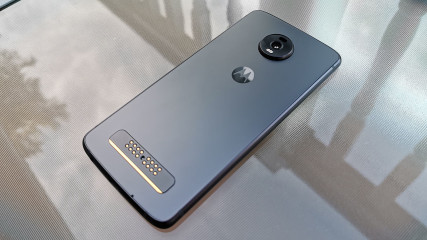

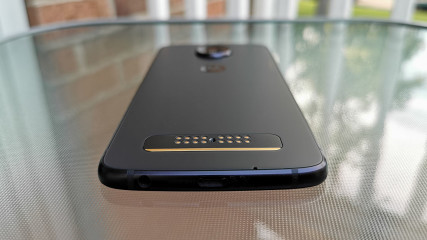
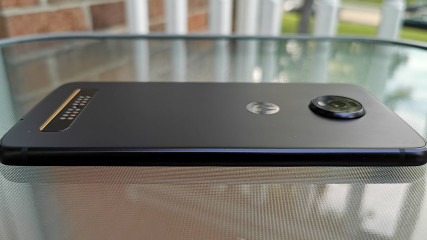



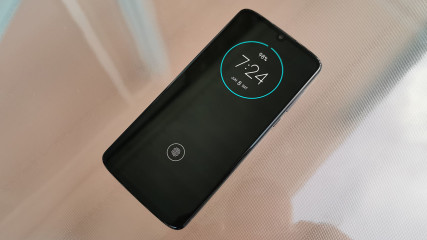


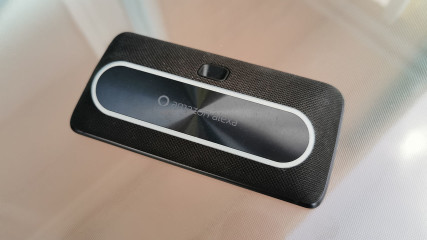









0 Comments - Add comment